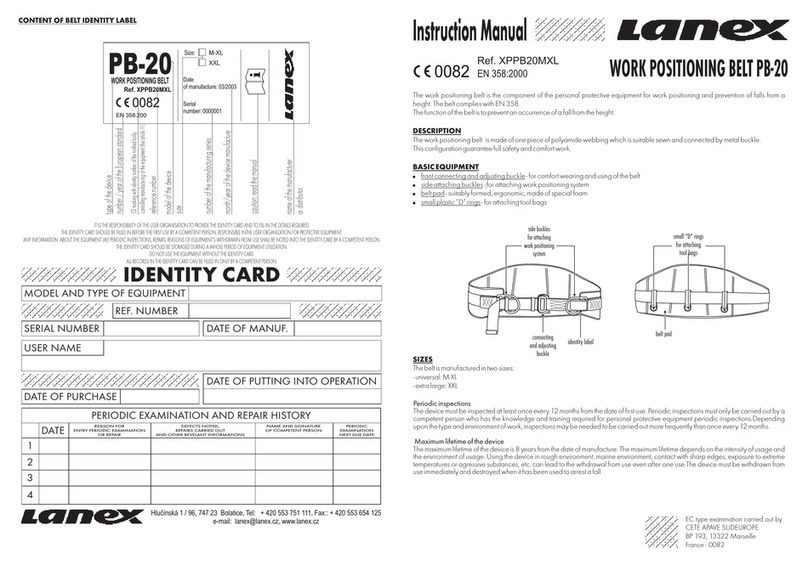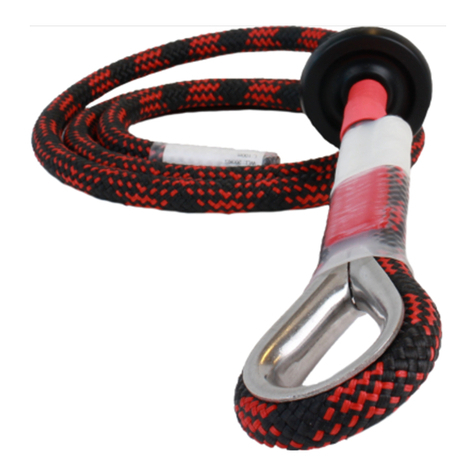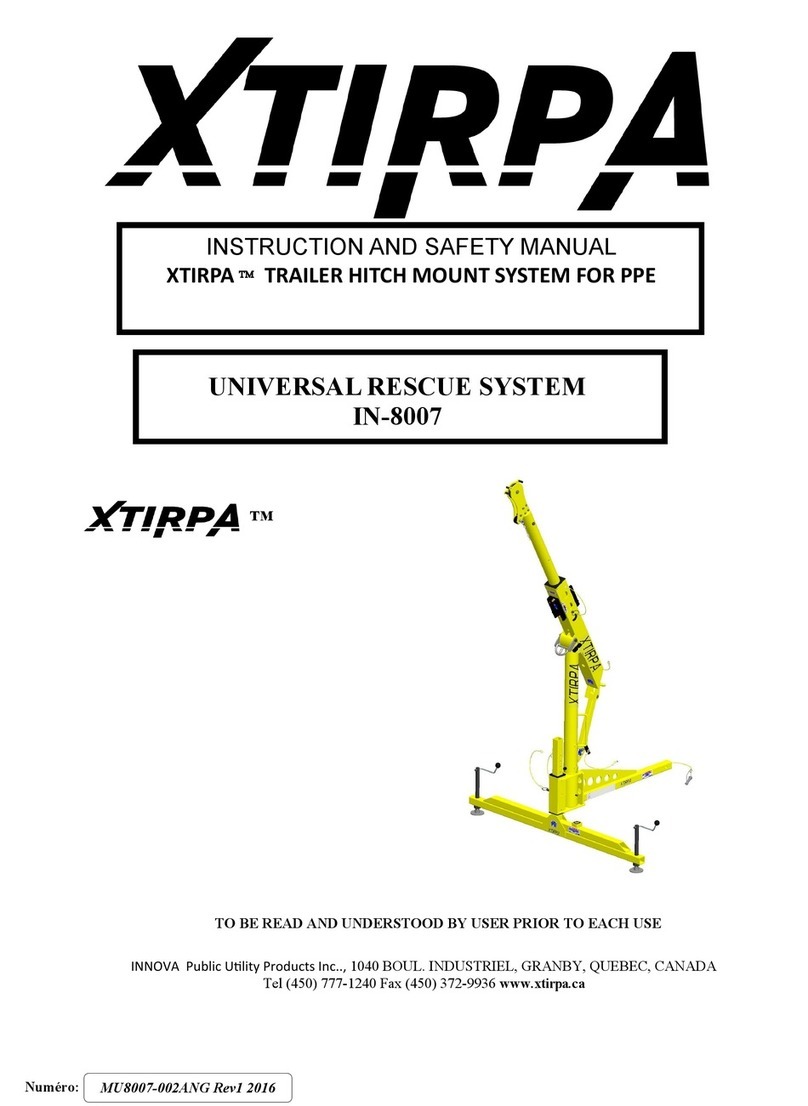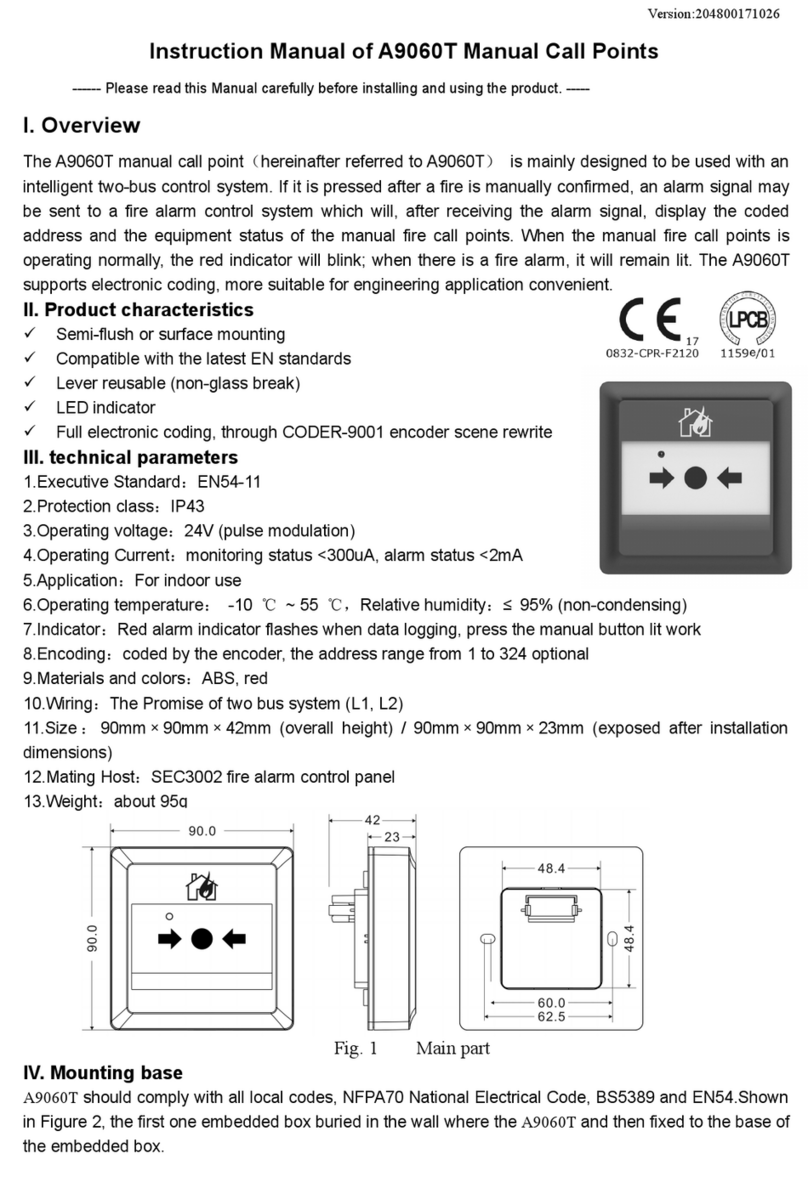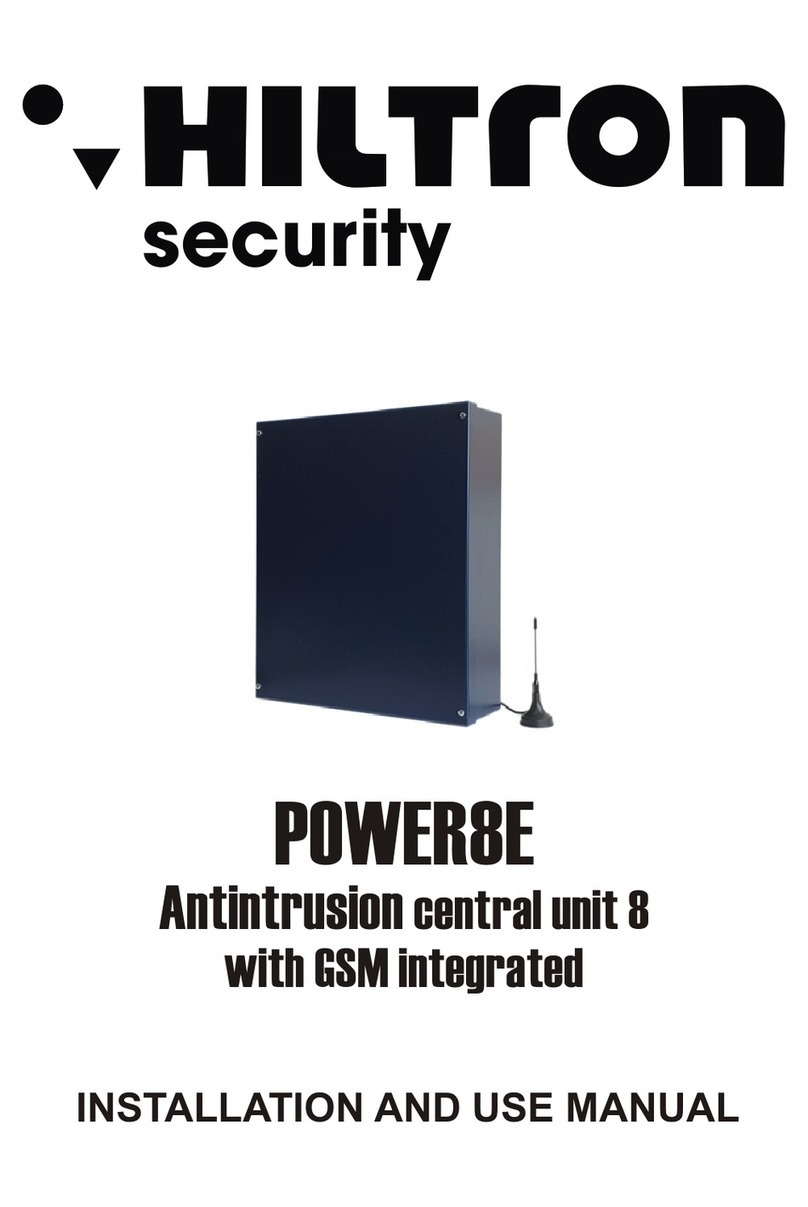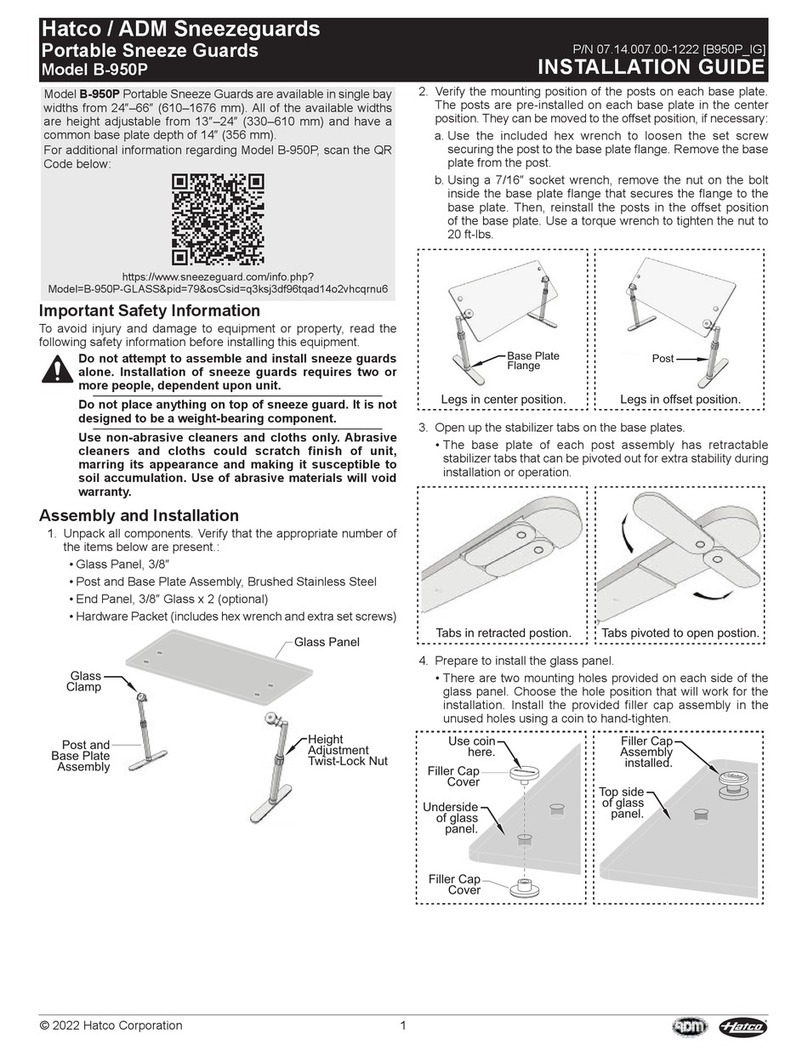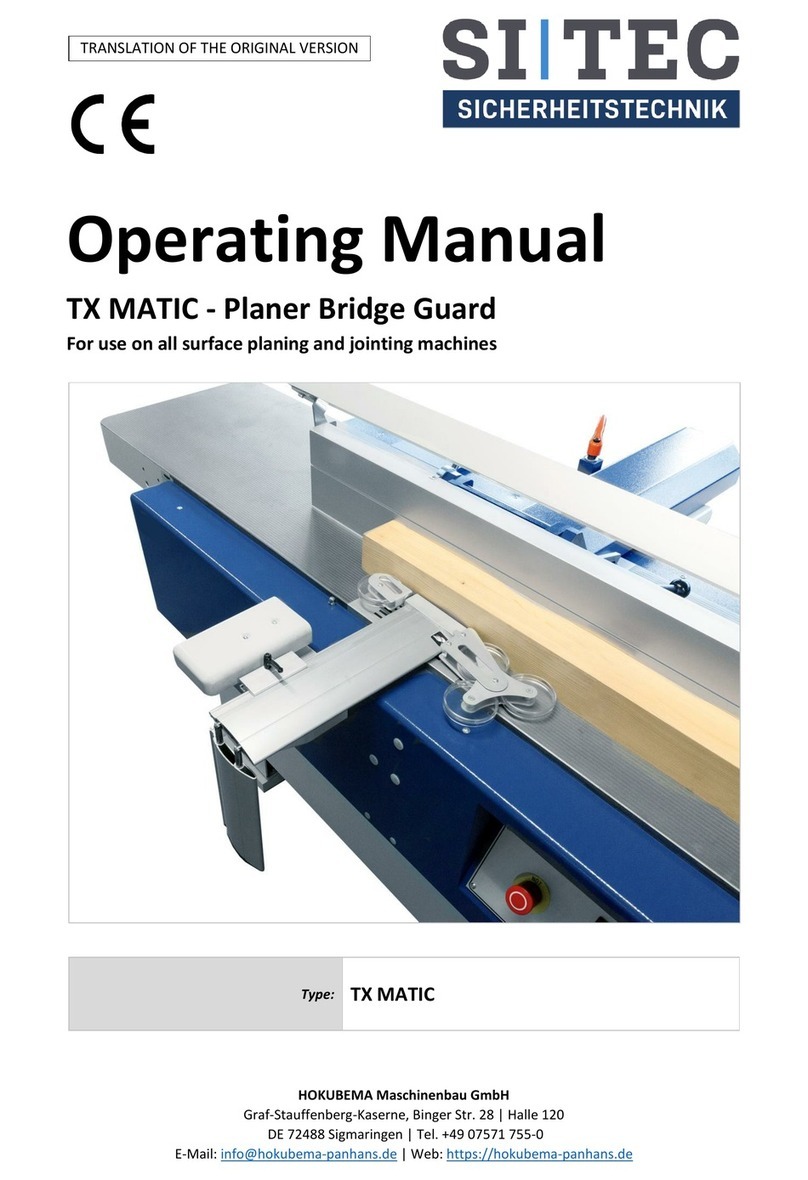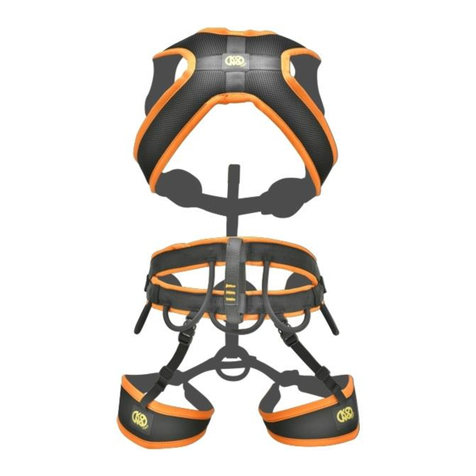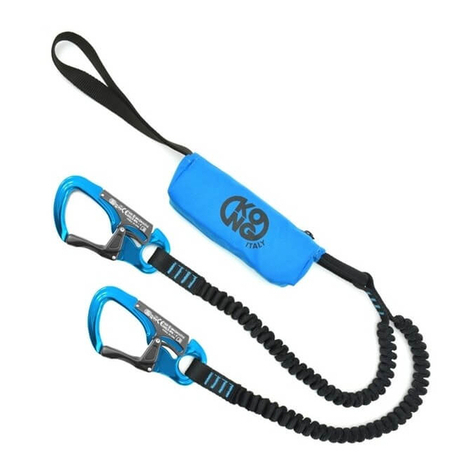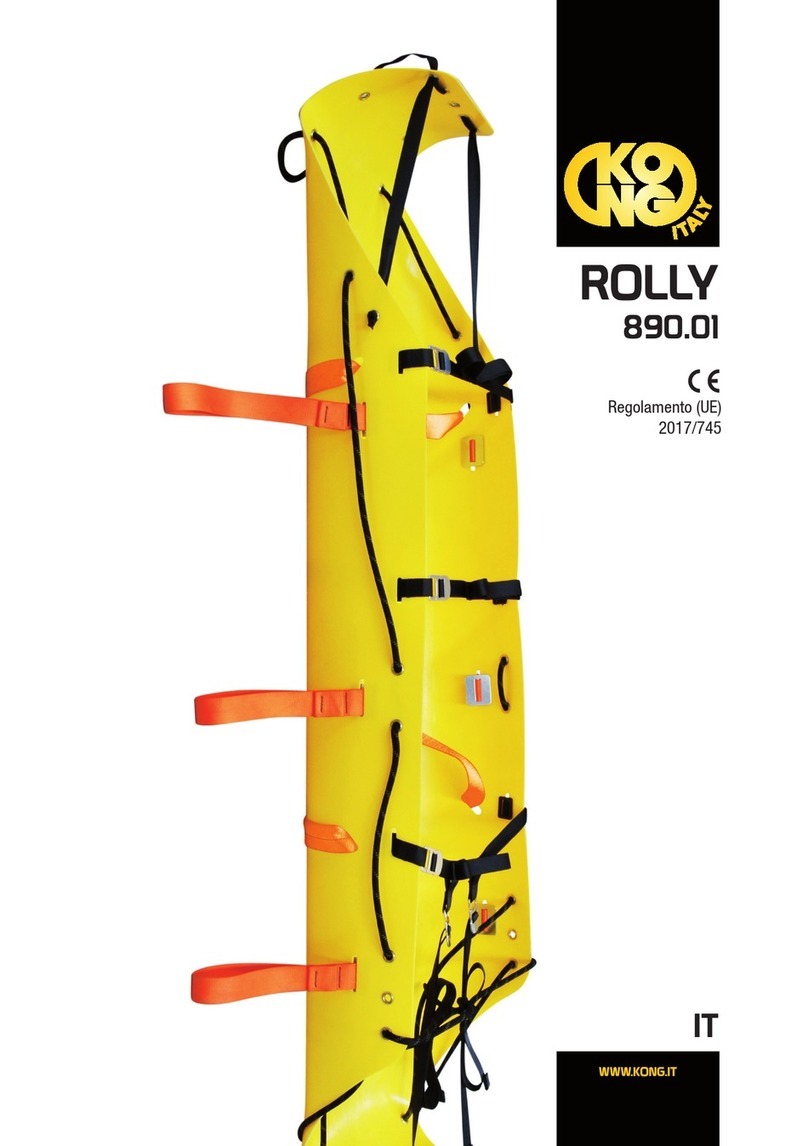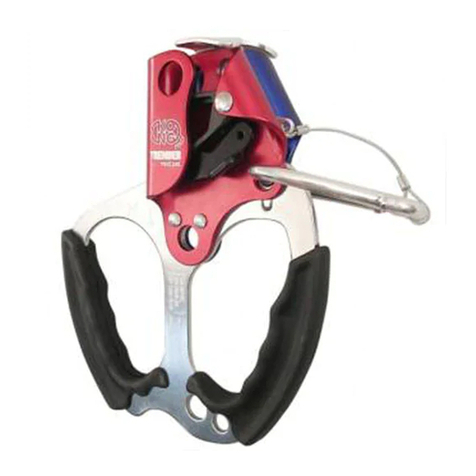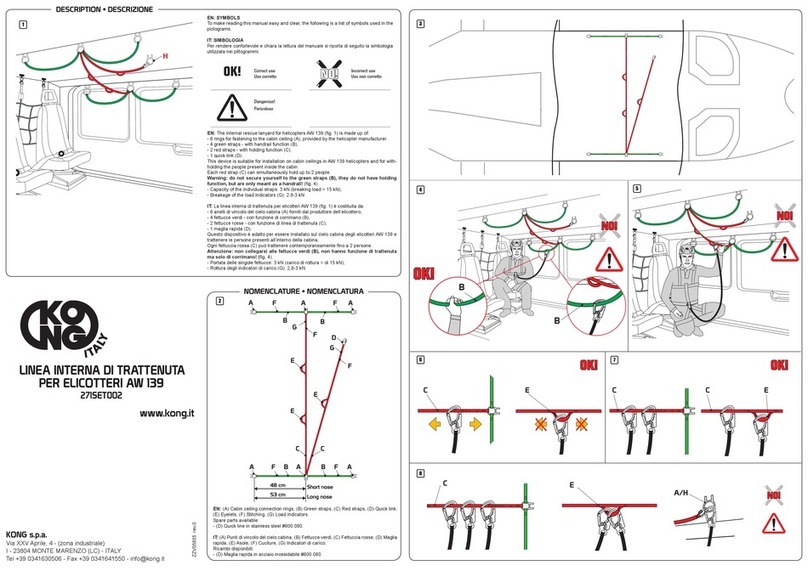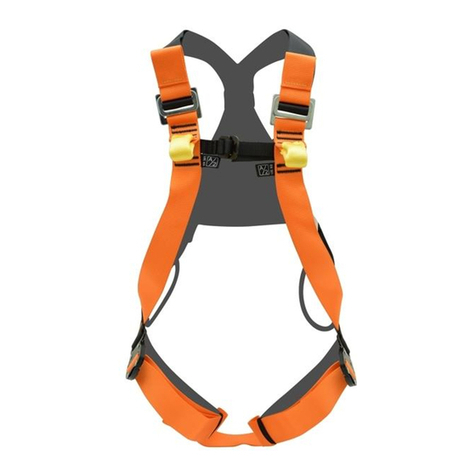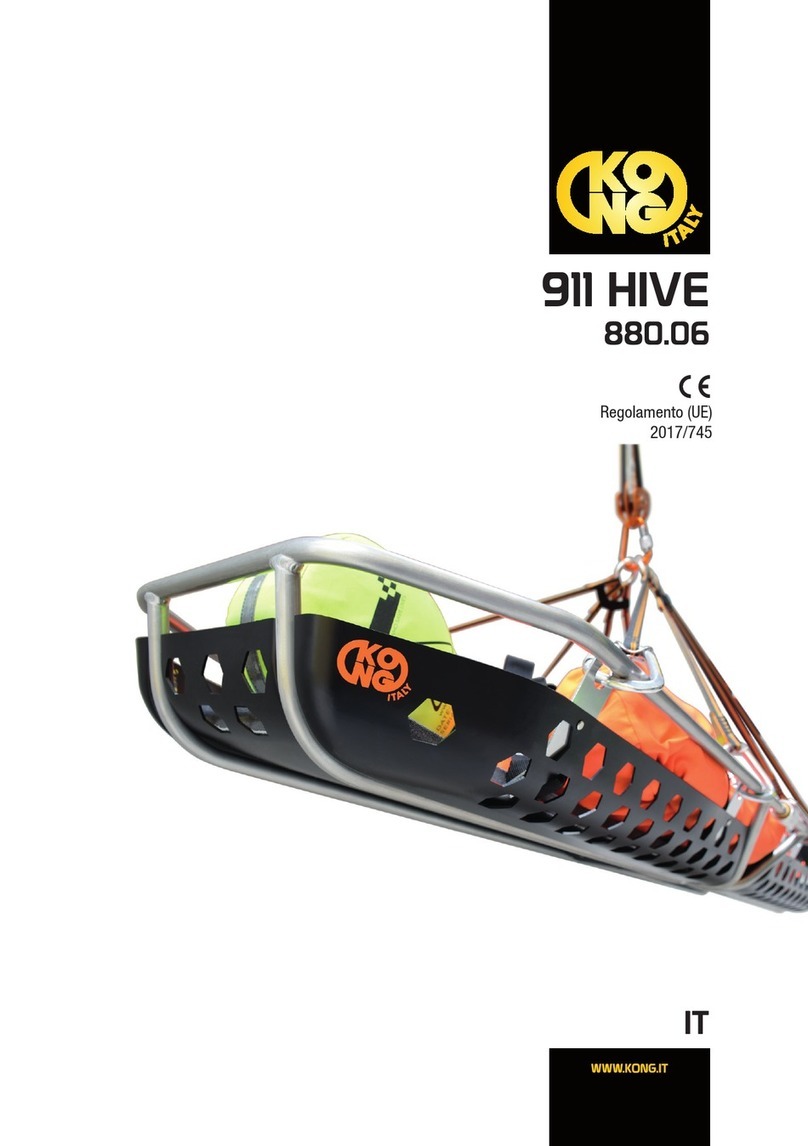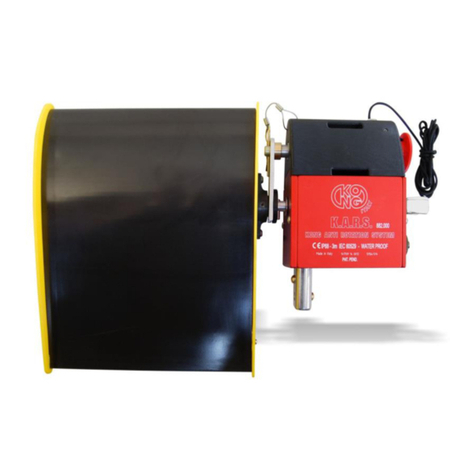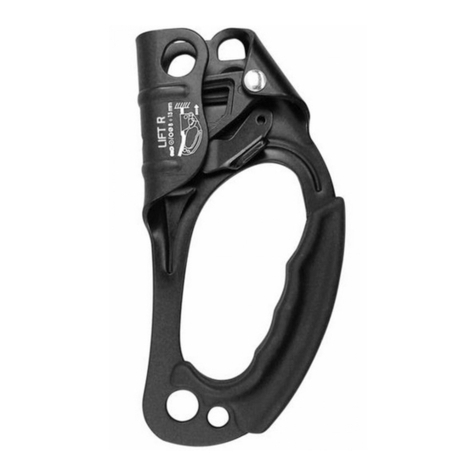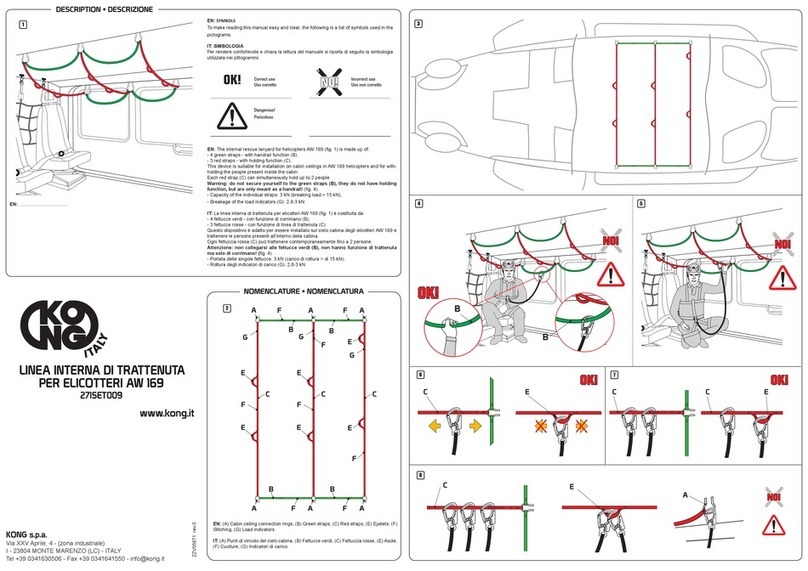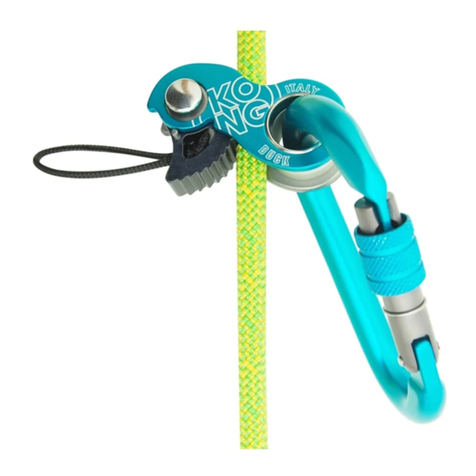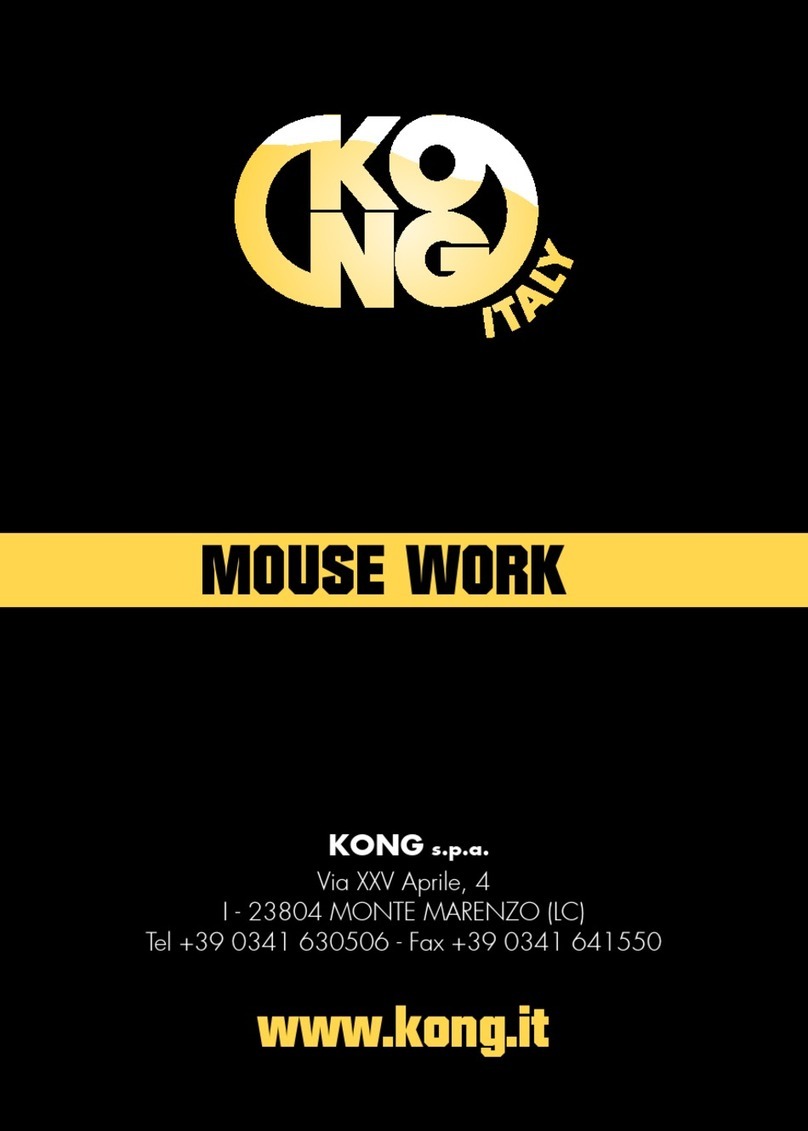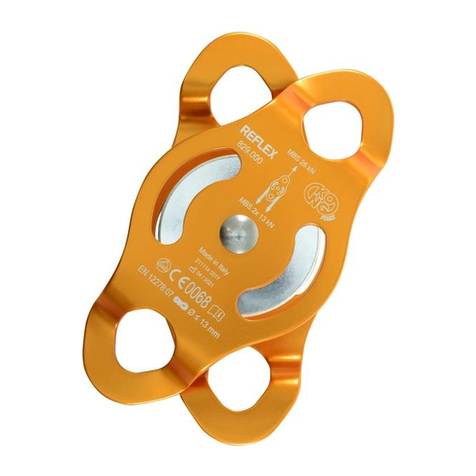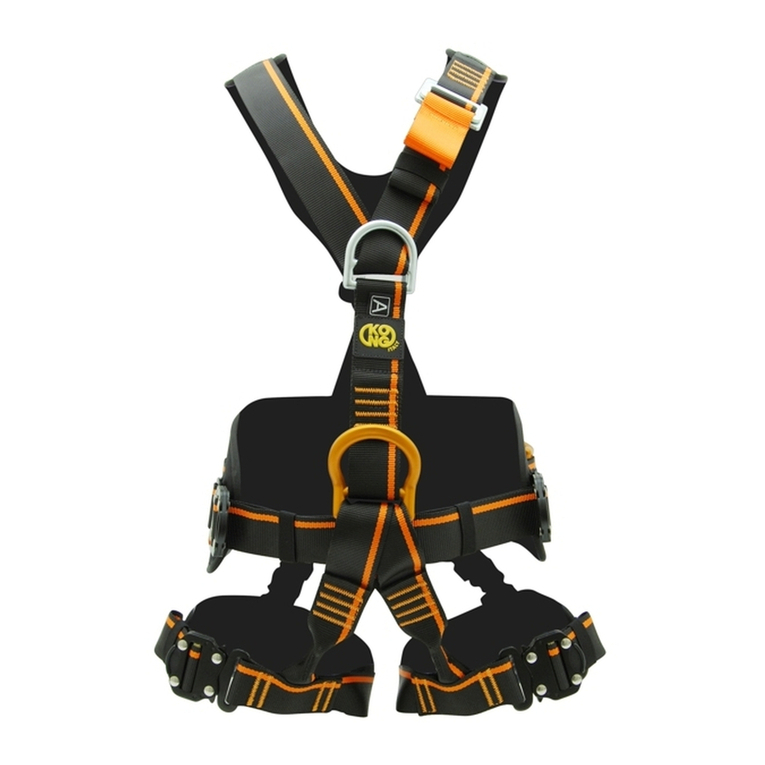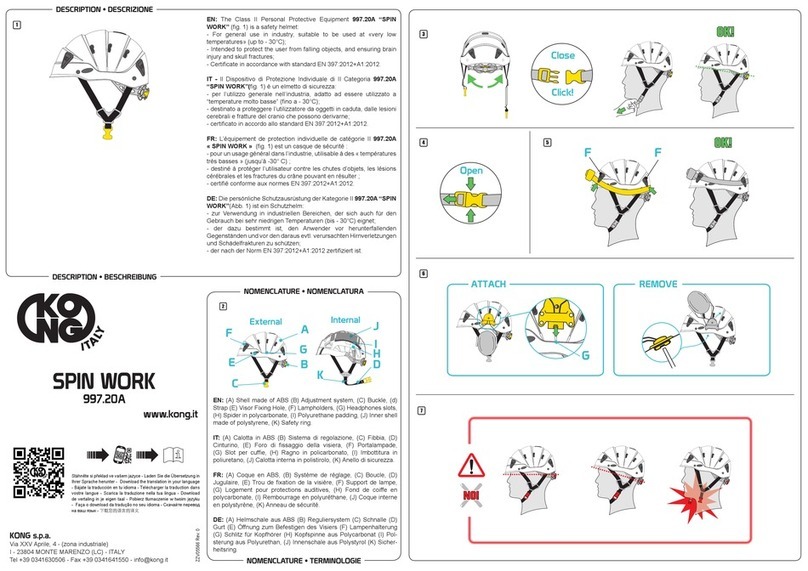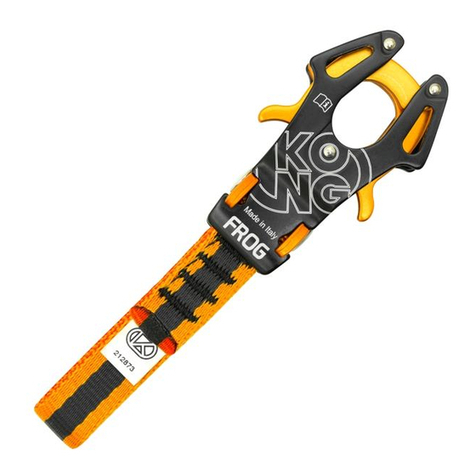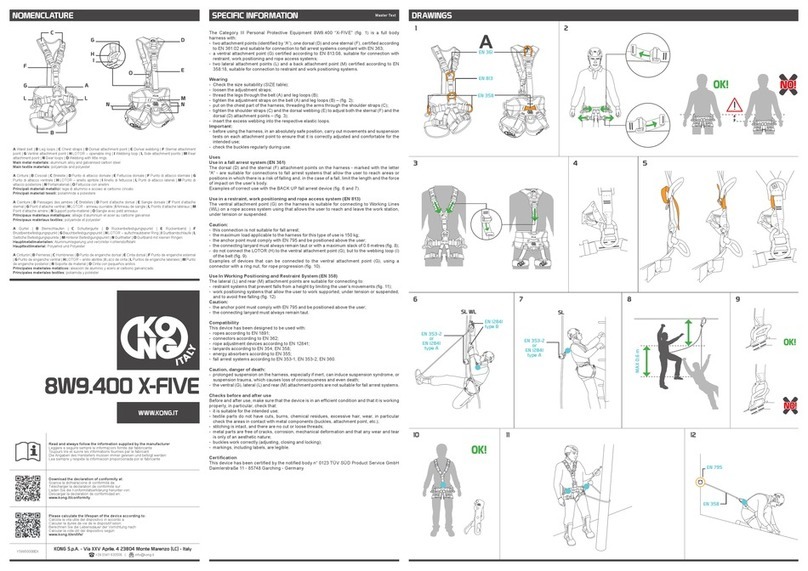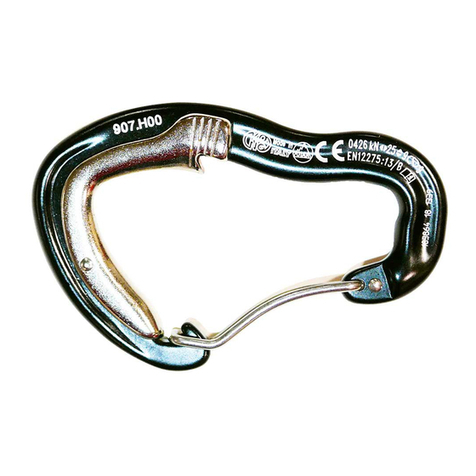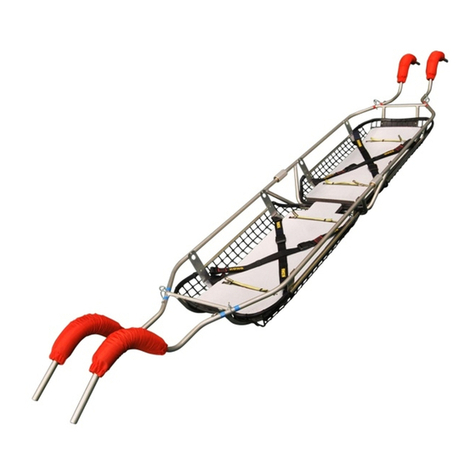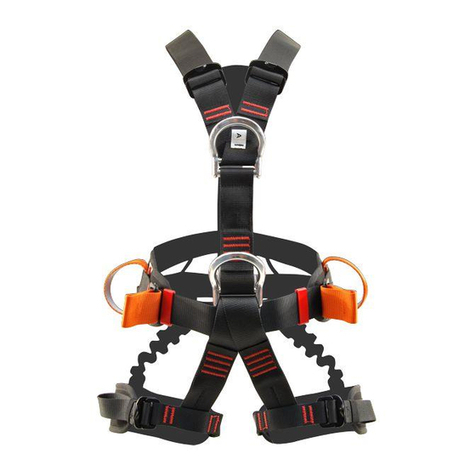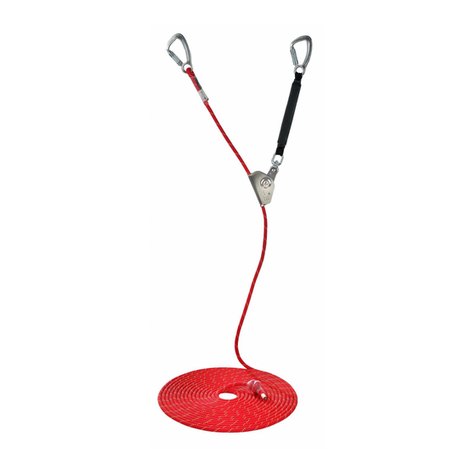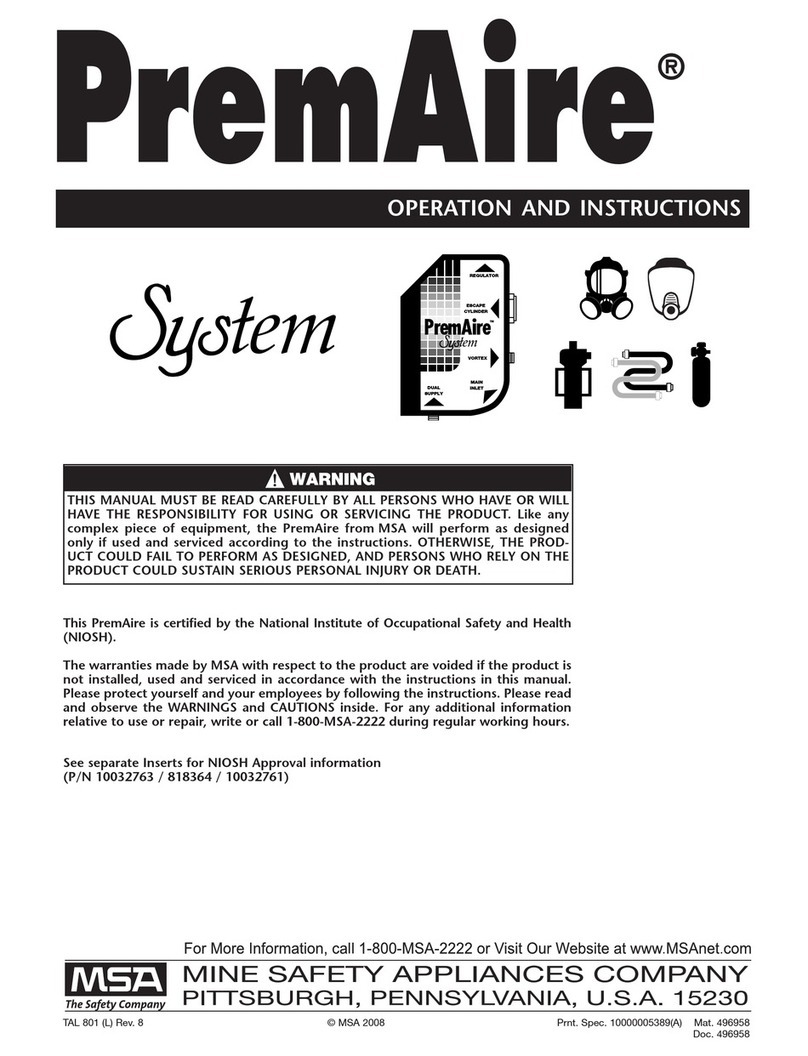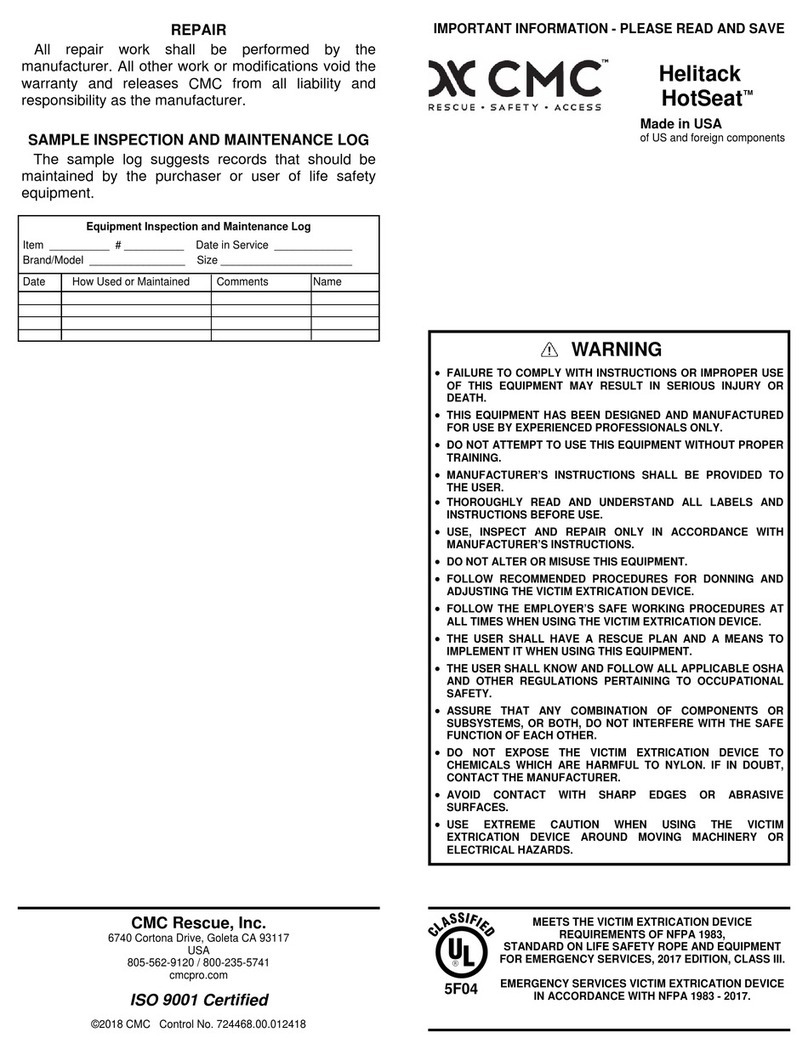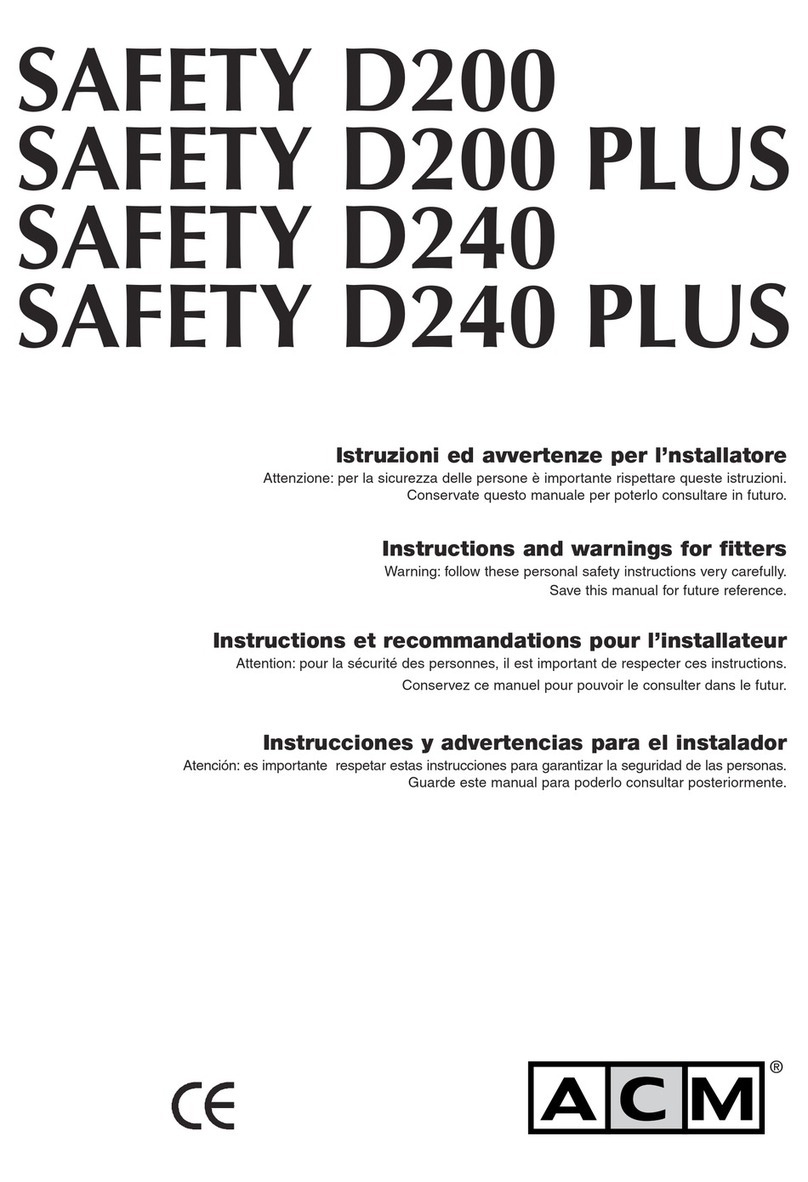
DESCRIZIONE: I dispositivi di protezione individuale di categoria III
“FORZA ø10mm”, “FORZA ø10,5mm” e “FORZA ø11mm” sono:
- corde KernMantel a bassa elasticità (corde semi-statiche) proget-
tate per accesso su corda, in speleologia, soccorso in quota e altre
attività simili (salita e discesa combinata di persone, dispositivo di
sicurezza per il posizionamento sul lavoro con accesso su corda,
soccorso con discesa e sollevamento di persone, come mezzo per
la salita, discesa e il movimento orizzontale in speleologia);
- parte di un sistema di protezione contro gli urti causati dalle cadute
dall’alto;
- certicati secondo la norma EN 1891:1998 tipo A.
TAGLIO: Ogni estremità di questo dispositivo è troncata dal pro-
duttore con una specica tecnica di nitura: l’anima e la calza sono
collegate in un’unica unità compatta negli ultimi 15 mm della lun-
ghezza della corda.
Se l’utilizzatore taglia questo dispositivo, la corda deve essere tron-
cata in modo che l’anima e la calza formino un’unica unità (ad esem-
pio, fondendo le estremità con un bruciatore ad alcool o tagliando le
estremità con una lama calda). Entrambe le estremità non devono
avere spigoli vivi e devono essere dotate di nastri esterni riportanti
le seguenti informazioni:
- numero della norma: EN 1891;
- diametro della corda in mm, esempio: 10,5 mm;
- tipo di corda A o B secondo la norma EN 1891:1998.
1 - INFORMAZIONI GENERALI
A) Prima di utilizzare il dispositivo, l’utilizzatore deve leggere e com-
prendere correttamente le informazioni fornite dal produttore (di
seguito “informazioni”).
Attenzione:
- Queste informazioni riguardano le caratteristiche, i servizi, il
ssaggio, lo smontaggio, la manutenzione, la conservazione,
la disinfezione, ecc. del dispositivo;
- Sebbene le presenti informazioni includano alcuni sugge-
rimenti sule modalità di utilizzo del dispositivo, queste non
devono essere considerate vere e proprie istruzioni per l’uso
(così come un manuale d’uso e manutenzione di un’auto non
insegna a guidare e non sostituisce una scuola guida);
- L’arrampicata su roccia o su ghiaccio, la discesa in corda
doppia, la via ferrata, la speleologia, lo sci alpino, il torrenti-
smo, l’esplorazione, le operazioni di soccorso, l’arrampicata su
albero e i lavori in quota sono tutte attività a elevato alto grado
di rischio, che possono essere causa di incidenti e persino di
morte. L’utilizzatore è totalmente responsabile dei rischi deri-
vanti da tali attività e dall’utilizzo del nostro dispositivo;
- Il presente dispositivo deve essere utilizzato solo da perso-
ne in condizioni mediche idonee che siano state addestrate (e
istruite) sul suo utilizzo, o sotto il diretto controllo di istruttori/
supervisori che ne garantiscano la sicurezza.
B) Prima e dopo l’utilizzo del dispositivo, l’utilizzatore deve eseguire
tutte le ispezioni descritte nelle informazioni speciche e, in partico-
lare, deve accertarsi che il dispositivo sia:
- in perfette condizioni e perfettamente funzionante;
- idoneo all’uso: sono ammesse solo le operazioni non contrasse-
gnate; ogni altro uso è considerato improprio e quindi potenzialmen-
te pericoloso.
C) Se l’utilizzatore ha il minimo dubbio sull’efcienza del dispositi-
vo, lo deve sostituire immediatamente, in particolare dopo averlo
utilizzato per arrestare una caduta. L’uso non conforme, le deforma-
zioni, le cadute, l’usura, la contaminazione chimica, l’esposizione a
temperature inferiori a -30°C o superiori a +50°C per i componenti/
dispositivi tessili/plastici, e +100°C per i dispositivi metallici, sono
alcuni esempi di altre cause che possono ridurre, limitare e termi-
nare la vita del dispositivo. E’ vivamente consigliato l’uso personale
del dispositivo per mantenere continuamente monitorati il grado di
protezione e di efcienza.
D) Questo dispositivo può essere utilizzato in abbinamento ad altri
dispositivi quando compatibili con le informazioni rilevanti dei fab-
bricanti.
E) La posizione dell’ancoraggio è fondamentale per la sicurezza
dell’arresto della caduta:
valutare attentamente l’altezza libera presente sotto l’utilizzatore,
l’altezza di una potenziale caduta, l’allungamento della corda/fune,
l’allungamento di un eventuale assorbitore/dissipatore di energia, la
statura dell’utilizzatore e l’effetto “pendolo”in modo da evitare ogni
possibile ostacolo (es. il terreno, lo sfregamento, le abrasioni, ecc.).
F) La resistenza minima dei punti di ancoraggio, realizzati sia su
elementi naturali che articiali, deve essere di almeno 12 kN. La
valutazione di quelli realizzati su elementi naturali (roccia, vegetali,
ecc.) è possibile solo in modo empirico, per cui deve essere effet-
tuata da persona esperta e competente, mentre per quelli realizzati
su elementi articiali (metalli, calcestruzzo, ecc.) è possibile in modo
scientico, pertanto deve essere effettuata da persona qualicata.
G) E’ assolutamente vietato modicare e/o riparare il dispositivo.
H) Evitare l’esposizione del dispositivo a fonti di calore e al contatto
con sostanze chimiche. Ridurre al necessario l’esposizione diretta
al sole, in particolare per i dispositivi tessili e plastici. A temperature
basse e in presenza di umidità può formarsi del ghiaccio che, sui
dispositivi tessili, può ridurre la essibilità e aumentare il rischio di
taglio e abrasione.
I) Vericare che il dispositivo sia stato fornito integro, nella confe-
zione originale e con le relative informazioni del fabbricante. Per
i dispositivi venduti in paesi diversi dalla destinazione di origine, il
rivenditore ha l’obbligo di vericare e di fornire la traduzione di que-
ste informazioni.
L) I nostri dispositivi di protezione individuale vengono certicati da
organismi accreditati indicati nelle istruzioni speciche del disposi-
tivo e sono inoltre soggetti alla sorveglianza sulla produzione - ai
sensi degli allegati V e VIII del Regolamento (UE) 2016/425 - da
parte di un organismo il cui numero di accreditamento è indicato
sul dispositivo.
Attenzione: i test di laboratorio, le ispezioni, le informazioni e
le norme non sempre riescono a riprodurre ciò che accade nel-
la pratica, per cui le condizioni di utilizzo reali in un ambiente
naturale possono differire, a volte anche sensibilmente. Infor-
mazioni ottimali possono essere ottenute attraverso la pratica
continua sotto la supervisione di personale competente, esper-
to e qualicato.
2 – LAVORI IN QUOTA
Informazioni aggiuntive per i sistemi individuali di protezione contro
le cadute dall’alto.
Ai ni della sicurezza contro le cadute dall’alto è essenziale:
- effettuare la valutazione dei rischi ed accertarsi che l’intero siste-
ma, di cui questo dispositivo è solo un componente, sia afdabile
e sicuro;
